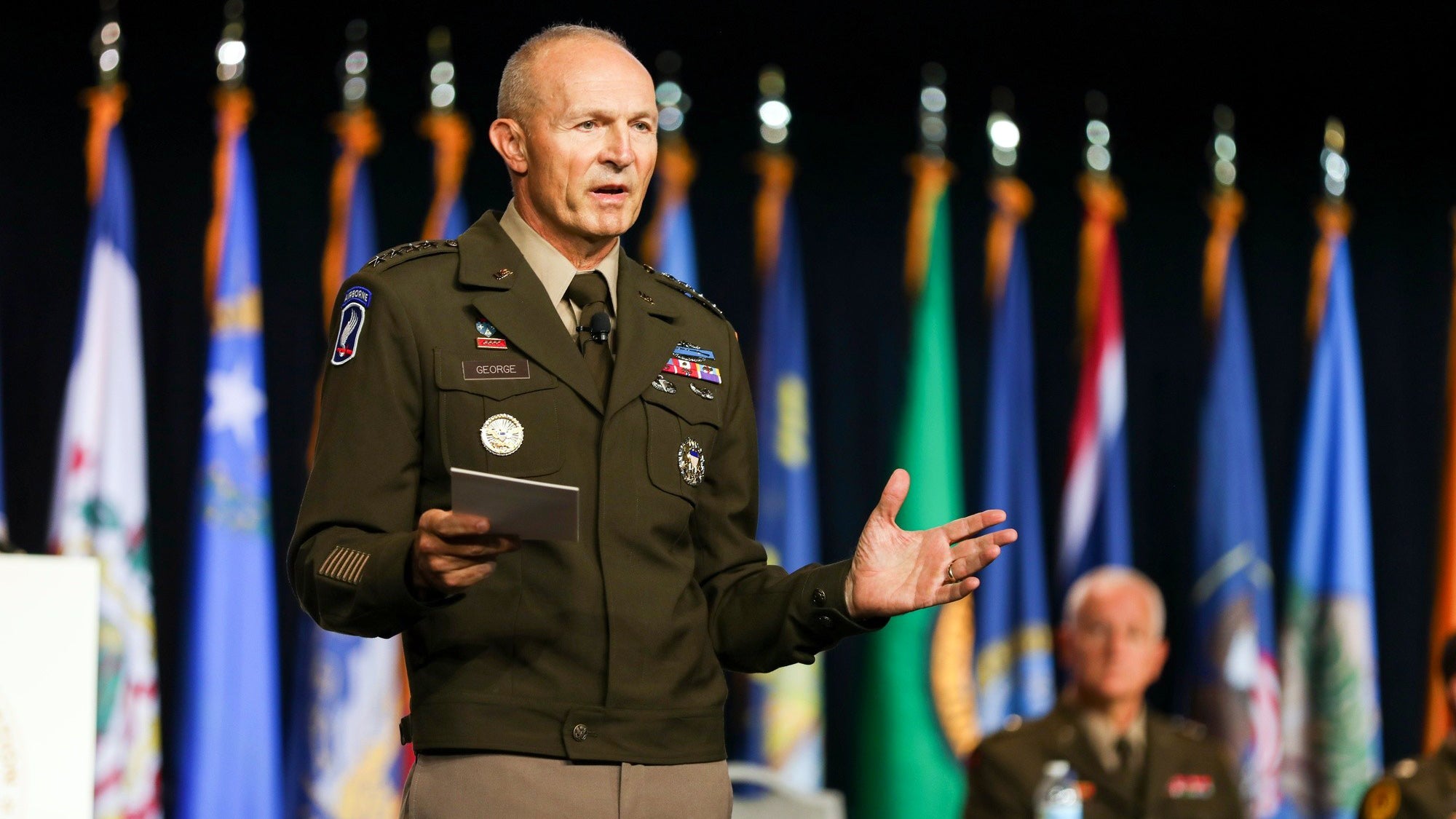George: ‘Global Army’ Ready Wherever It’s Needed
George: ‘Global Army’ Ready Wherever It’s Needed

America’s Army must be ready to fight anywhere and anytime it’s called, and it must do so as a total force, Army Vice Chief of Staff Gen. Randy George said.
“People will talk about Europe, and they’ll talk about the Pacific and all those threats that are out there, but our Army is a global Army,” George said. “We’re going to have to be ready to go wherever we’re going to go, and wherever we go, it’s going to be a multicomponent solution. It’s always been that way, and it will continue to be.”
Speaking Aug. 20 at the National Guard Association of the United States’ 145th General Conference and Exhibition in Reno, Nevada, George said the strategic environment today is “as complex and dangerous as I’ve seen it in the time I’ve been in uniform.”
To achieve and maintain the readiness it needs to respond to any threat anywhere in the world, the Army must work in tandem with its Army National Guard and Army Reserve components, said George, who has been nominated to be the next Army chief of staff.
The Army National Guard, for example, makes up nearly 40% of the operational force, George said. “If the Guard is 40% of our force, you don’t go anywhere with just 60% of your team,” he said.
One challenge the Guard must grapple with—and Army leaders must balance—is the increase in state missions the Guard is being asked to do, George said. “The Army is busy as ever, and the Guard is as busy as ever,” he said. “Two years ago [during the COVID-19 pandemic], it’s hard to believe you could be busier, but I think we’re busier.”
Looking ahead, George said he is focused on warfighting and delivering ready combat formations. “What we want are trained, fit, disciplined, cohesive and lethal teams,” George said. “We’re here to fight. That is why we have a U.S. Army.”
There must be conversations at every echelon about training management and how soldiers are spending their time, George said. “If there’s something that you’re doing that’s not contributing to being more lethal or more cohesive, then we’ve really got to take a hard look at if we should be doing it,” he said.
Two other areas where George is focused are continuous transformation and strengthening the profession of arms. The Army must transform, and it is learning “a ton” from the war in Ukraine, George said. “The battlefield is changing and changing quickly,” he said. From the growing threat of unmanned aerial systems to how quickly technology is evolving, the Army must make sure it’s absorbing the right lessons, George said.
“How is that getting into our schoolhouses? How is our professional military education changing so we’re getting after what those lessons are?” he said. “What are we doing to change our acquisition processes? What are we doing at the unit level?”
When it comes to the profession, George said it’s “critically important” to read and write about the profession of arms. It’s also important to focus on discipline and standards, he said.
“Discipline and standards are the reason that we’re going to be successful in battle,” he said. “It’s the foundation of any good unit.”
Developing that foundation takes time, George said. “You don’t just turn the switch on when you deploy,” he said. “You build that inside your unit when you train. You build that when you’re in your armories.”

